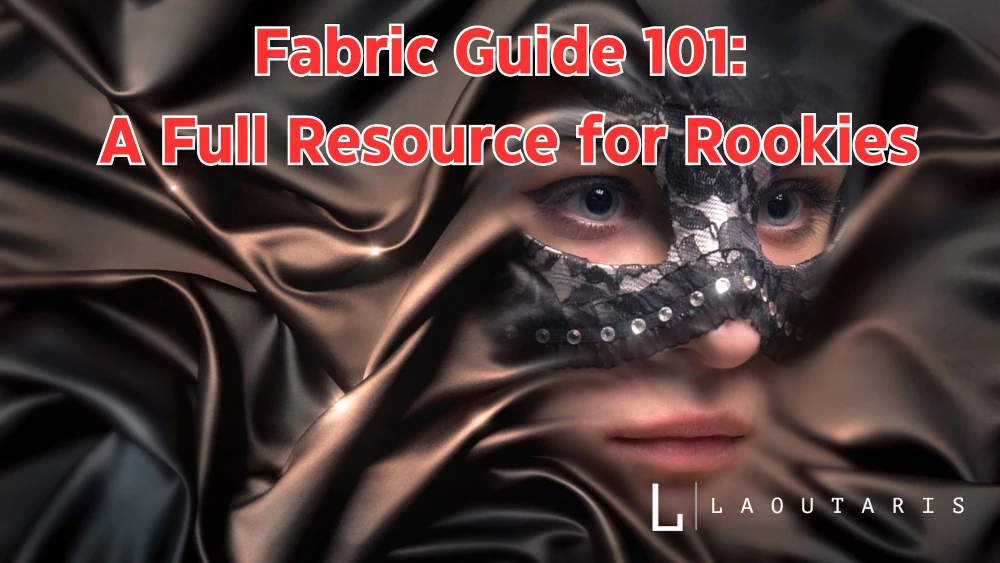A comprehensive fabric guide for beginners explaining fibers, construction, characteristics, uses, and care for dressmaking, crafting, and upholstery.
Table of Contents
The average reading time is 9 minutes. The article was last updated on 29/06/2024.
Fabric Information of non basic fabrics
Fabrics Glossary
Key Fabric Terms
Understanding some key terminology will make learning about fabrics much easier:
- Weave: The way threads are interlaced to create the fabric structure. Common weaves include plain, twill, satin, and jacquard.
- Fiber: The raw material used to produce textile yarn and fabric. Natural fibers include cotton, wool, and silk. Synthetic fibers include polyester, nylon, and acrylic.
- Blend: A fabric made from a combination of two or more fibers. Provides combined properties of each thread.
- Weight: The density and thickness of a fabric. Lightweight to heavy-weight.
- Drape: How well a fabric hangs and flows. Based on fiber, weave, and weight.
- Texture: The overall look, feel, and stiffness of a fabric. Affected by fibers, yarns, and finish.
- Breathability: How well a fabric allows airflow and ventilation. Important for comfort.
- Durability: Strength and resistance to wear, wrinkling, stretching, and shrinkage.
Fabric Types
Here are some of the main types of fabrics and their key characteristics:
Cotton: Cool, comfortable, breathable. Absorbs moisture well. Wrinkles easily. Durable and easy to clean. Used for a wide range of clothing and home décor.
Wool is warm, durable, and resists wrinkling. Its fibers can feel and shrink, and it softens with age and wear. Wool is used for coats, suits, sweaters, and blankets.
Silk: Lightweight, lustrous, elegant drape. Wrinkles easily. Labor-intensive production is so often expensive. They are used for dresses, blouses, ties, and undergarments.
Linen: Made from flax fibers. Absorbent, breathable, resists dirt. Wrinkles easily. It adds casual texture but also works for formal wear. They are used for clothing and furnishings.
Cashmere is luxuriously soft, warm, and lightweight. It is produced in a rare and labor-intensive manner, and pilling can occur. Cashmere is used for sweaters, accessories, and blankets.
Chiffon: Light, sheer, plain-woven fabric with a soft drape. Wrinkles easily. They are used for dresses, blouses, and evening gowns.
Brocade: Heavy jacquard-woven fabric with ornate designs. It often contains metallic threads. They are used for formalwear, upholstery, and drapes.
| Fabric | Fibers | Weave | Weight | Uses |
|---|---|---|---|---|
| Cotton | plant-based cellulose | plain, twill | light to mid-weight | clothing, home décor |
| Wool | protein animal hair | twill, knits | mid to heavy-weight | outerwear, blankets |
| Silk | natural protein | varied | light to mid-weight | dresses, blouses, ties |
Fabric Care Basics
Caring for your fabrics properly is critical to making them last and retaining quality:
Fabric Care Symbols
Look for the fabric care label on garments for guidance. Everyday care symbols include:
- Machine wash cycle – regular, permanent press, delicate
- Water temperature – hot, warm, cold
- Tumble dry, line dry, or flat dry
- Iron heat level – high, medium, low, no steam
- Dry clean only or wet clean
- Do not bleach
- Do not tumble dry
To prevent damage, follow all fabric care instructions on the label. When in doubt, err on the gentle side.
Hand Washing
- Fill the sink or tub with cool water and a mild detergent or soap.
- Agitate gently; do not rub, twist, or wring.
- Rinse thoroughly with clean water.
- Roll the item in a towel to absorb excess moisture.
- Lay flat on a drying rack or towel. Reshape as needed.
Machine Washing
Set machine according to fabric type:
- Delicates: Use delicate cycle, cool water, and gentle detergent—place in a mesh bag.
- Everyday Fabrics: Use a permanent press cycle, warm water, and regular detergent. Wash similar colors together.
- Bulky Items: Use a gentle cycle of cool water. Reduce load size to allow items to move freely.
Ironing and Steaming
- Check the fabric care label for the iron heat setting.
- Iron delicate fabrics inside out to prevent shine marks.
- Use the steam function to remove stubborn wrinkles.
- Allow items to air dry partially before ironing.
Storing Fabrics
- Keep fabrics clean before storing them to prevent stains and pests.
- Store fabrics flat, if possible, or loosely folded. Hang heavy textiles.
- Use fabric covers or breathable containers.
- Avoid light exposure to prevent fading.
- Store wool and fur in a cool, dry place. Use cedar to deter moths.
For more rare fabrics, check this pdf with care instructions
Fabrics For Apparel
Here are some of the most common fabrics used for clothing and their popular uses:
Cotton
The workhorse fabric for apparel. Breathable, comfortable and versatile:
- T-shirts
- Casual shirts
- Denim jeans
- Khakis, chinos
- Activewear
- Loungewear
- Undergarments
- Jackets
Wool
Valued for its warmth, durability, and wrinkle-resistance:
- Sweaters
- Coats
- Suits
- Trousers
- Skirts
- Dresses
- Blazers
- Scarves
Silk
The epitome of luxury in apparel. Light and elegant with beautiful drape:
- Blouses
- Dresses
- Nightgowns
- Robes
- Scarves
- Ties and pocket squares
Linen
A breathable fabric perfect for keeping cool in warm weather:
- Casual pants
- Skirts
- Dresses
- Shirts
- Jackets
Leather
Rugged and versatile animal hide used for a range of garments:
- Jackets
- Pants
- Skirts
- Shoes
- Gloves
- Belts
- Bags
Polyester
A synthetic fabric valued for wrinkle resistance and durability:
- Activewear
- Rain jackets
- Fleece
- Suiting
- Formalwear
Check this site to see all the fabrics for clothing and their prices.
Frequently Asked Questions
What are the main types of fabrics?
The main fabric types are cotton, silk, wool, linen, polyester, nylon, acrylic, rayon, acetate, satin, fleece, jersey, microfiber, burlap, canvas, chiffon, denim, velvet, corduroy, seersucker, chambray, brocade, tweed, twill, and lace.
How can I tell if a fabric is good quality?
Indicators of good quality fabric include dense, smooth weave with no loose threads, sturdy seam edges that won’t easily fray, rich color, and fabric-appropriate weight and drape for the intended use. Higher-quality fabrics often feel softer and more luxurious.
What’s the difference between woven and knit fabrics?
Woven fabrics like cotton and linen are made by weaving two sets of yarns together. Interlocking loops make knit fabrics like wool sweaters of one thread. Knits stretch more than wovens and drape well.
How do I wash delicates properly?
Hand wash delicates gently in cool water using a mild detergent or soap. Do not wring, twist, or rub the fabric. Rinse thoroughly and roll in a towel to absorb moisture. Lay flat on a rack or towel to dry, reshaping as needed.
Why does silk require dry cleaning?
Silk fibers are delicate and prone to water spotting and shrinking when washed. A washing machine’s agitation can snag, tear, and destroy silk fabrics. Dry cleaning is a gentler process using alternative solvents.
Please give us some suggestions in the comments. We want your feedback to make this tool accessible and helpful for most people who want to use and care for fabrics.

Pashalis Laoutaris
I am a professional writer, fashion blogger, and owner of the site https://laoutaris.com. I have more than 20 years of experience as a salesperson in the fashion industry and 10 years of experience as a fashionista. I consider myself a true fashionista. I write daily blog articles about fashion, tools and converters, and everything you need to know about current fashion trends.
Share this article
Our Latest Articles
Laoutaris Recommends




